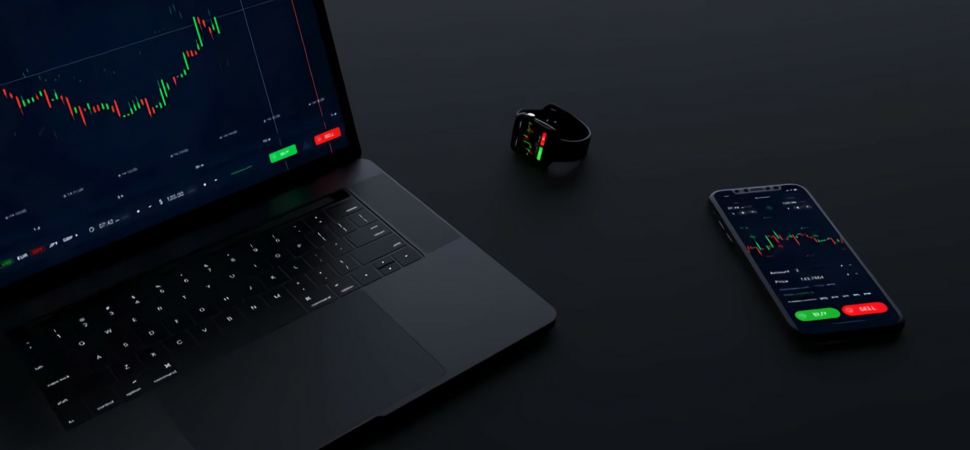14.06.2023
Евгений Лебедев
575

A Forex indicator is a mathematical formula or statistical data. With the help of indicators traders analyze financial markets and make decisions regarding transactions. Forex indicators are also used to find trends in the market. Finally, traders use indicators to find buy or sell signals.
It is important to understand that Forex indicators are not a guarantee of success. They are tools that provide additional information. Traders should always apply their own analysis. And they should do it based on the right indicators. They should correspond to the trading style and adapt them to the specific market conditions. Let's get into the types of Forex indicators.
Volume indicators
Volume indicators for Forex help traders estimate the volume of transactions in the market. They show how many assets have been bought and sold over a selected period of time. Volume indicators are a great tool to analyze market activity.
A few examples of forex volume indicators:
- Volume indicator. The indicator shows the number of concluded contracts, over a selected period of time.
- Exchange volumes. The indicator tracks changes in trading volumes. It also displays the relationship between changes in volumes and the price of the asset.
- Indicator of accumulation and distribution. The indicator shows the flow of money into the asset and the distribution between buyers and sellers.
Forex volume indicators are very useful. They help traders determine the direction and strength of a trend. Additionally, these indicators can help predict a trend reversal.
Trend Indicators
Trend indicators are useful for trend indicators in the market. These indicate the direction and strength of the current trend. Trend-following indicators reveal price movements which help you make decisions about entering and exiting trades.
Trend indicators include Moving Averages, Average Directional Index (ADX) and Parabolic SARs. These and other trend-following indicators help traders ascertain whether the market is moving up, down or sideways.
Volatility indicators
Forex volatility indicators measure and display the magnitude of price movements. These enable traders to better manage their risk exposure as well as time to enter and exit trades.
A few examples of volatility indicators for Forex:
- Average True Range (ATR). The indicator shows the average price fluctuations over a period of time.
- Bollinger Bands. The indicator consists of three lines. They show the average price and volatility boundaries: the upper and the lower.
- Relative Volatility Index (RVI). The indicator measures the relative volatility of price movements.
The use of volatility indicators in conjunction with other analytical tools allows traders to better control risk and make informed trading decisions.
Pulse indicators (oscillators)
Overbought or oversold assets can cause market conditions. Such situations allow traders to make money. Impulse indicators are used to identify and anticipate overbought or oversold conditions. They measure the strength and speed of price movements.
Pulse indicators include such indicators as:
- Relative Strength Index (RSI)
- Stochastic Oscillator
- MACD (Moving Average Convergence Divergence).
Using momentum indicators, traders identify moments when the market is in extreme states. This can be an indication of a trend change. Impulse indicators, when combined with other analytical tools, also confirm entry or exit signals.
How to use Forex indicators correctly?
Indicators are a very good tool in a trader's arsenal. The important thing is to use them properly. Here are three simple, yet helpful tips.
First, make sure you choose the right indicators for the job. Do your research on the different types of indicators. Choose the ones that are best suited for your chosen strategy. Be sure to consider the time frame in which you plan to trade.
Second, use a combination of different indicators. When you rely on a single indicator, it's easy to go wrong. To avoid false signals, it is advisable to combine several indicators. For example, you could use a trend indicator in conjunction with a momentum indicator.
Third, don't overload the chart. Use only those indicators you need for the task at hand. This will filter the flow of information, avoiding overloading charts with information. Too many indicators can lead to confusion and erroneous decisions.
Indicators are not all-in-one, foolproof tools. They can give you false signals. Using the wrong indicators can result in losses. That's why you should always use additional analysis.
The Top 10 Indicators
You need to pick the right Forex indicator for your specific task. However, we can highlight ten popular indicators which are popular with traders. Among these indicators, it is easy to find the best Forex indicator to suit the situation.
- Relative Strength Index (RSI): shows the strength and speed of price movements.
- Stochastic Oscillator: Indicates the position of the price relative to a range of prices over a certain period.
- MACD (Moving Average Convergence Divergence): measures the difference between two moving averages.
- Parabolic SAR (Parabolic SAR): determines the trend direction and provides entry and exit signals.
- Moving averages (Moving Averages): Smoothing price data, determining the direction of the trend.
- Ichimoku Kinko Hyo: A composite indicator, showing trend direction, support and resistance levels.
- Bollinger Bands: An indicator based on price fluctuations.
- ADX (Average Directional Index): measures the strength and direction of a trend and helps determine its strength.
- Fractals: An indicator which identifies key support and resistance levels on the chart.
- Volatility Indicator: Shows the volatility of the market and helps to assess potential profit and risk.
This is just a short list of popular indicators. The choice of indicator depends on the trading strategy and preferences of the trader. When deciding on which indicator to use, one should keep in mind the task at hand. It is also worth trying out different indicators to determine which ones will best suit your strategy and style.
